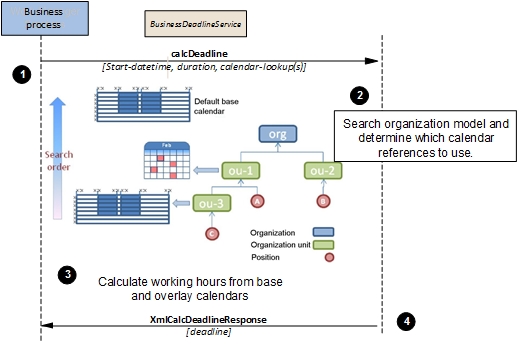The value set for the
calendarLookAhead property in the
dac.properties file determines how far ahead the calculator should look when working out the deadline. If the calculation shows that there is not enough working time available in the period defined by
duration, plus
calendarLookAhead, an error is returned.
The deadline is calculated using UTC, but displayed using the local time zone of the client. For example, assume that a work item is offered to the users in an organization unit, and that the base calendar for that organization unit is based upon the London time zone. However, the work item being offered resides on a BPM node based in New York. Calculation of the deadline is based on the time zone and the working times of the London organization unit, and not on the New York time zone of the BPM node.
Note: These calculations may not be performed correctly if the base calendar in use does not explicitly specify a time zone. For details, see
Base and Overlay Calendars.

